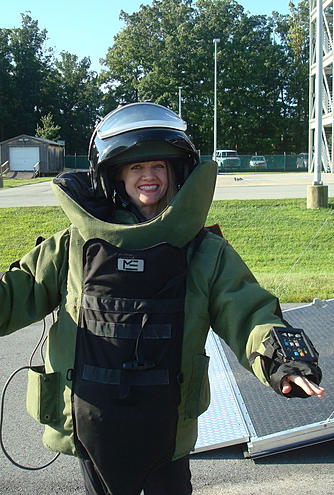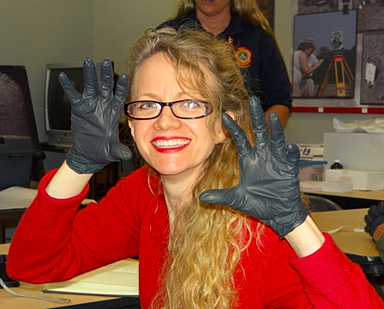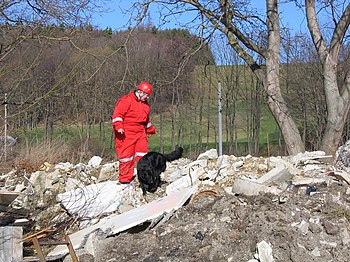So perhaps some plotting fodder if your character suddenly goes MIA in your storyline.
When your missing character is reported to 911, the police will come out and start to put the basic pieces of the puzzle together.
The police are usually not trained in search and rescue techniques. This is a specialization, and it is performed by volunteers. Search and Rescue volunteers go through a great deal of training and practice because the skill sets need to be built upon and these skills are perishable - that is "use it or lose it."
But within the search and rescue community there are specializations.
- If your missing character was in a plane they'll call CAP - Civil Air Patrol (my character Lexi Sobado in Missing Lynx depends on this training as she escapes the bad guys)
- The Coast Guard searches for people missing on waterways.
- If your character is in the mountains or treacherous terrain, they may need a technical crew.
- There's the search and rescue people who do land navigation and terrain searches
- Trackers - or manhunters follow human tracks to try to find the subject or at least give a direction of travel
- Equine team
- K-9 - is a broad group where the dogs train in their own specialization.
This particular weekend, I was training with Search and Rescue Tracking Institute. It was a three day hunt/training. 98 degree heat, high humidity, little to no breeze. If someone went missing in that kind of weather they would be in dire straits. The chances for heat stroke were high especially if they weren't properly equipped or didn't have a good water source.
Here are some myths that were debunked over the weekend:
- You must wait 24 hours to report a missing adult. There are amber alerts for children, and silver alerts (for the elderly and those with dementia) but if your character is supposed to come home at six, and they aren't there, then her love interest calls honey bun's work, and they never showed up that day, there's no need to wait until 7:30 the next morning. Certainly, if they were supposed to exit a trail at 4pm and now it's dark, your character's BFF should be alerting the rangers ASAP.
- You can't search at night. Actually, I thought it was much easier to search at night with a flashlight. The trail was much more obvious.
- It's easier to search with the bright sunlight. The sun overhead made finding tracks really difficult. We'd use our hats to try to shade areas where we thought we might find a footprint. We'd also use our flashlights during the day to try to get the angle of the light to show the ridges in the footwear.
- You can tell by the size of the shoe or the length of the gait how tall the person was, their sex, how heavy, that they were right handed. . . You can't tell anything about the physical characteristics of a person from their shoe print. All you can say is, "that is a shoe print."
- A tracker knows which shoe prints to follow. No, they don't. They need help. Did your hiker do the right thing and leave aluminum foil prints? (See video just below) Does the family know what kind of boots the hiker likes to wear? Did they run away barefooted? The tracker looks at ALL the tracks and tries to decide which is the most likely. As we passed people on the trails, we'd stop them and ask if they'd mind if we took a picture of their soles. This gave us a library of shoe prints that we could eliminate.
- A tracker can tell how long ago a person walked down the path. Sometimes they can give it a good guess and sometimes they can't tell at all. As a matter of fact, I was testing my "aging" skills on Sunday next to a master tracker. There were five sets of tracks, each track was set up at a different time within 72 hours. What time was each track made? To be honest, there wasn't much of a difference at all between the five, and I was pulling random numbers from the air. I was glad to learn that I wasn't the only one thwarted by this task. The master tracker said he couldn't find the differences either. Weather conditions, sun exposure, and type of terrain all impact one's ability to make good judgment calls on whether this track was just laid or it had been there for days and days.
- You can just send out a drone to search and area. Drones are impractical in most wilderness search areas because of the tree canopy. Also, there are a TON of regulations which make it impractical in other areas, too, such as, you can't fly over anyone. They are coming up with regulations so searchers can eventually use them but that will be another specialty and require basically a pilot to work the apparatus. But for now, know that writing the use of drones for search and rescue in America would be writing it wrong.
One of the days we were tracking, they also had K-9 involved so the manhunters and the K-9 handlers could discuss ways the different teams could best work a task together. These particular K-9s were air scenters and HRD (human remains detection).
I wanted to see an HRD K-9 in action so his handler hid a tooth in the rocks at a campfire. Once he was in the area, the K-9 walked right over to the fire pit and looked like he was thinking about it, walked a circle around the pit once, then sat down right beside the tooth. It was invisible to the naked eye.
This is a picture of the handler giving the dog his green light to search the area as she released his leash. You can see right from the get-go that K-9's nose was pointing toward the fire pit. (far left of the photo).
And here he is getting his reward, which for this K-9 was high pitched vocal praise and lots of rubbing and petting.
Next, I got to be the lost person to show an air-scenting dog in action.
Can you see me in the log? I'm laying on my red poncho. On this task the dog started, oh I'd say about a football field away. I thought that I'd have a chance to take a little nap. . . but in short order, I heard him coming toward me.
Now, let me stop and tell you what this is like to be on your back without a visual field in the woods and have an animal coming at you at full speed. I knew it was a dog, but still everything in me said "stand up and get big." It was incredibly vulnerable feeling to hear the leaves crunch and the galloping feet. And then out of nowhere a furry face was peering down at me. He didn't stop and give me a lick or interact with me at all. He moved in for verification, and then took off again. I'm told that this interaction depends on the dog. The lab in their group likes to stay and get pet and give kisses before he goes to report his find. One thing I can say was that when I was found the K-9 radiated joy. His whole body felt like a great big "WHOOP! I win!"
This is a picture of the K-9 reporting back to his handler that he found someone.
After the K-9 brought his handler to me, he was rewarded with play; he got to have a tug of war with his ball.
If your character goes missing because they were injured, lost, or abducted, Search and Rescue will work the case until your character is found. There's one open case in our area that the teams have been working for over five years. It bothers every one of the people on the team that they haven't been able to bring this person's remains home to their family. They keep sending teams out to look. So when you write your plot, even if the case goes cold, SAR will keep at it. But also, remember as you write that these are volunteers, and they show up as they can from their daily lives.
Related article:
Heat Stroke info for writers an article by Patti Phillips HERE
Hug a Tree - surviving lost in the woods HERE
Cadaver dogs HERE
As always, a big thank you ThrillWriters and readers for stopping by. Thank you, too, for your support. When you buy my books, you make it possible for me to continue to bring you
helpful articles and keep ThrillWriting free and accessible to all.
































